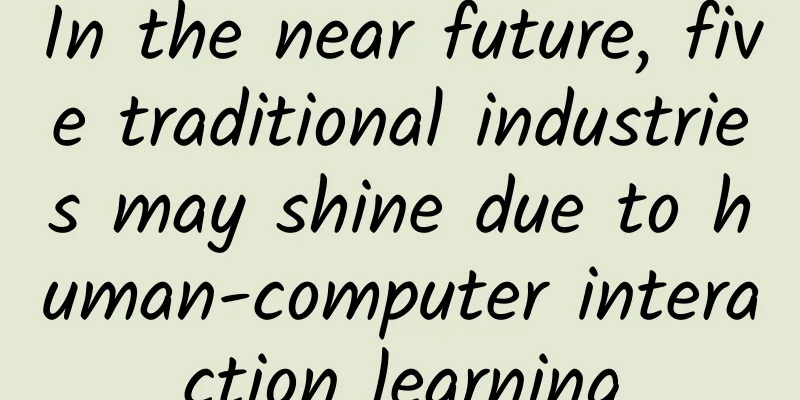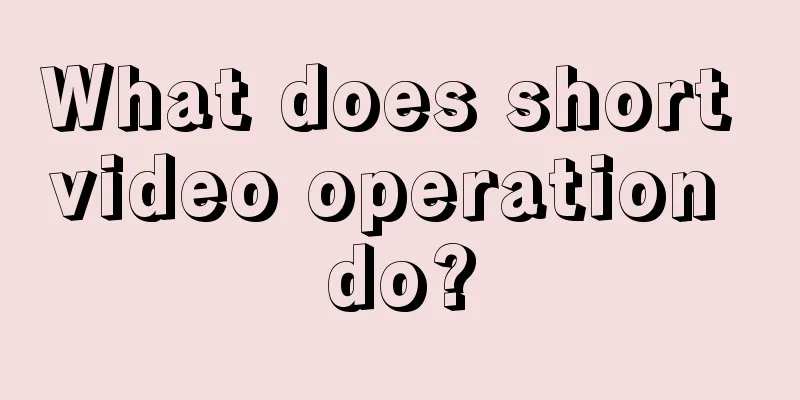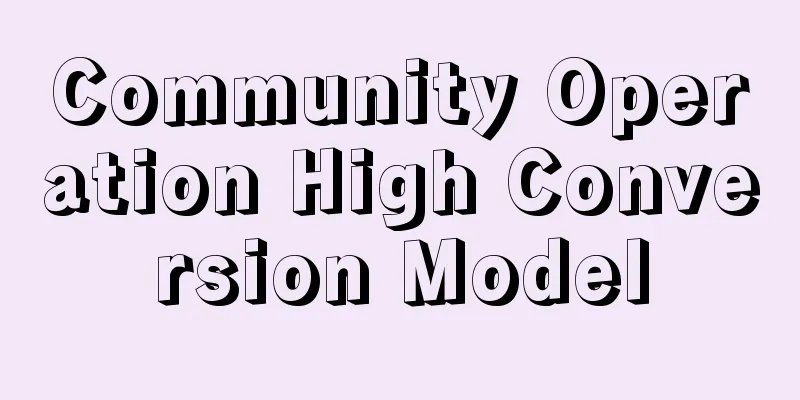In the near future, five traditional industries may shine due to human-computer interaction learning

|
Over the years, machine learning has always been on the big and small technology trend lists. But starting this year, it’s time for us to learn from machines in human-computer interaction instead of just being “teachers”. Blaise Aguera y Arcas, head of Google's machine intelligence business, said in an article published on Medium: "Machine intelligence not only gives us a better understanding of the external environment, it also gives us a better understanding of our own cognition." In the spring of 2016, Google’s machine-learning program, AlphaGo, defeated Lee Sedol, the world’s greatest Go player, at the game of Go. The victory was a major milestone for a technology called “deep neural networks,” which think more like humans than any other form of artificial intelligence. To perfect this program, the AlphaGo team did everything they could - AlphaGo played 30 million games and played against highly skilled human chess players many times. Although Google intended AlphaGo to learn how to play chess, something unexpected happened: the chess player, who originally wanted to teach AlphaGo to play chess, did not expect that his own chess skills would also improve. Google's achievement not only shows us how human thinking affects machine learning, but also allows us to begin to imagine a future - a world where machine learning also affects human thinking. In fact, we have already indirectly learned from machines in various fields: when Spotify uses algorithms to recommend music to us, our musical tastes will also be influenced by the recommended works; when observing the learning process of the nervous system, we have also gained a deeper understanding of the brain. What would happen if we didn’t see machines as a threat, but believed that humans and machines could learn from each other and work together? Would observing how computers understand the relationship between words make us more creative when writing? When we teach someone a new language, can computers also improve their translation skills? We’ve heard a lot about machine learning, but today we’re going to talk about human-computer interaction learning. In fact, human-machine interactive learning may rapidly transform some industries and shape our future. 1. Education Education is one of the areas where human-computer interaction learning is most likely to take place. Adaptive learning, for example, uses machines to design personalized learning services for students. From big names like Pearson to startups like DuoLingo, the technology is already being used in education. Not only that, DuoLingo and similar software are also using human input to improve the quality of machine translation. As online education and multi-channel learning take off, companies that use human-computer interaction technology will have a head start; these forward-thinking companies are helping us redefine the word "learning" - for both humans and machines. What might the future look like? Students will have personalized study plans that are more suited to their own habits—just like a thermostat automatically adjusts the air to the right temperature. Not only that, this personalized service will give students suggestions on what to learn next, just like Netflix recommends videos to users. This novel teaching method will understand personal questions such as how many times students need to read their notes to remember them, whether they are visual learners, and whether they learn better in small groups to achieve personalized design. Therefore, adaptive learning platforms can connect students, educators, and science and technology to enable them to work together. 2. Human Resources Human resources involve a series of processes from recruitment to management, and it is very appropriate to develop human-machine interaction learning in this field. In fact, startups such as Belong and Prophecy Sciences have already involved machines in the company's recruitment process; Google's People Operations and similar teams have also taken the lead in using data to optimize human resources. Therefore, we can use machines to identify and predict the development trends and needs of human capital, and then enable algorithms and employees to understand each other. What might the future look like? Human Resources will be renamed "Human-Machine Resources" - in order to help employees have better career development, in addition to their supervisor they will also have a teacher to teach them knowledge of machine learning. 3. Venture Capital Over the past five years, venture capital firms have been steadily increasing their investments in AI startups, but they have not yet tried to let machines assist them in making investment decisions. In fact, venture capitalists have good connections, insider knowledge, and keen business intuition. If they can also use the quantitative trend identification and analysis that machines are good at, it can be said that this is an ideal combination for human-machine interactive learning. What might the future look like? A startup incubator service called AI Combinator will emerge, which will analyze the latest angel investment dynamics and industry trends with the help of top venture capitalists and machines to discover new market opportunities. By working with machines, venture capitalists may be able to come up with new investment strategies and discover new investment opportunities. 4. Psychology and Behavioral Sciences A new study from MIT found that algorithms can predict our behavior faster and more accurately than humans can. As machine learning continues to develop, it allows us to further understand our thoughts and behaviors, and thus help us change our behaviors as needed anytime and anywhere. Whether it is psychotherapy, fitness or retirement investment, all walks of life can benefit from this "behavioral intervention". What might the future look like? A device called HaBit will be born with similar functions to Fitbit - it records people's behavior and provides personalized incentives and feedback services to help people change their behavior at key moments to establish good habits. 5. Art It may be a little hard to imagine, but human-computer interactive learning has the potential to change the way we create. In addition to analysis, machine learning also provides new information based on the analysis results. It can distinguish images (for example, cats and blueberry muffins look different), but it can also generate new content, such as new images or music. Recently, the Google Brain team, which has become famous for completely subverting Google's artificial intelligence technology, launched the Magenta project - aimed at testing whether people can "create excellent art and music works" with the help of machines. However, the project has a bigger "ambition" - it wants to understand how humans will use the creative information given by machines, and in this process, how we learn from machines to improve our own creative process. What might the future look like? Co-creation — the kind of work that is done by artists and algorithms — will emerge. Musicians, writers, and artists will be deeply influenced by machines and see them as partners, and will begin to try different creative methods. Today, people have realized that machine learning will affect all walks of life and change the nature of our work. However, while machines are replacing us to complete some tasks, what impact will cooperation with machines have on our thinking, learning and creation? In any case, we expect humans and machine learning to help each other, whether this cooperation occurs in class, painting or meeting. As a winner of Toutiao's Qingyun Plan and Baijiahao's Bai+ Plan, the 2019 Baidu Digital Author of the Year, the Baijiahao's Most Popular Author in the Technology Field, the 2019 Sogou Technology and Culture Author, and the 2021 Baijiahao Quarterly Influential Creator, he has won many awards, including the 2013 Sohu Best Industry Media Person, the 2015 China New Media Entrepreneurship Competition Beijing Third Place, the 2015 Guangmang Experience Award, the 2015 China New Media Entrepreneurship Competition Finals Third Place, and the 2018 Baidu Dynamic Annual Powerful Celebrity. |
>>: Aston Martin and LeEco end electric car partnership, sources say
Recommend
Channel promotion: All the things you don’t know are here
He used to work for a large Internet company, whe...
How to operate an event in 7 steps for beginners
For a novice operator , how can you do a good job...
How to write a hot topic title? Share 5 tips!
Hot topic titles have always been one of the more...
Guangdong University Rankings 2019, which undergraduate universities are there in Guangzhou?
Which universities in Guangdong Province are amon...
【Physical Therapy】PNF proprioceptive neuromuscular facilitation technique
【Physical Therapy】PNF proprioceptive neuromuscula...
7 effective speech lessons to improve your speaking ability, 10 minutes a day to quickly improve your eloquence
Improve your speaking ability, 10 minutes a day e...
Baidu, Toutiao, Guangdiantong and other OCPX intelligent bidding modes, help you fully analyze in 5 minutes!
I changed batches of materials, but there was no ...
A Guide to Image Management for Women in the Workplace
A guide to image management for women in the work...
Celebrities strongly recommend the "Happy Fast Slimming Zumba Dance" which everyone can dance to, which can burn fat, easily lose weight and dance sexy
Celebrities strongly recommend the "Happy Fa...
Can AI meet human emotional needs?
With the continuous advancement of science and te...
iOS componentization is not just the architect's job
iOS componentization was once a hot topic in the ...
The development of autonomous driving is accelerating, and test cars will be on the highway next year
At the end of 2017, Beijing was the first city to...
Beijing is under blue warning for heavy rain! Please be careful when staying at home or traveling →
Monday morning rush hour Beijing, Tianjin, Hebei ...
Convenience stores are not a panacea for community O2O
Once upon a time, I was superstitious about conve...
5 "pitfalls" to avoid in marketing activities
As the old saying goes, "Failure is the moth...









